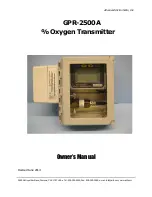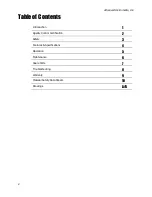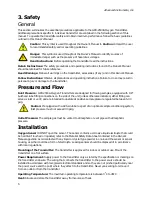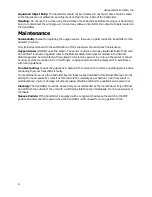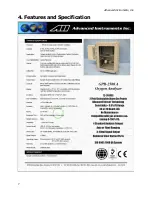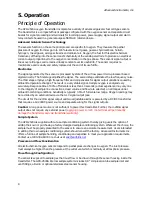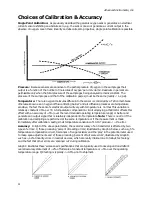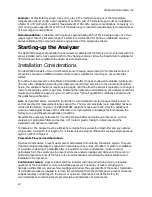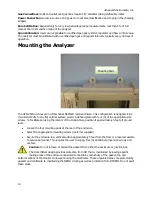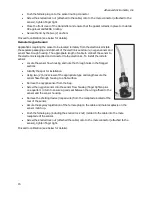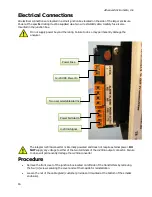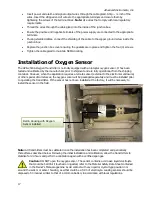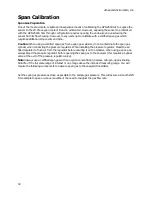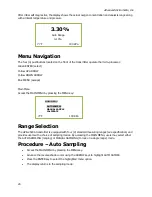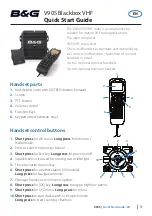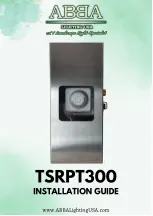
Advanced Instruments, Inc.
3. Safety
General
This section summarizes the essential precautions applicable to the GPR-2500A Oxygen Transmitter.
Additional precautions specific to individual transmitter are contained in the following sections of this
manual. To operate the transmitter safely and obtain maximum performance follow the basic guidelines
outlined in this Owner’s Manual.
Caution: This symbol is used throughout the Owner’s Manual to Caution and alert the user
to recommended safety and/or operating guidelines.
Danger: This symbol is used throughout the Owner’s Manual to identify sources of
immediate danger such as the presence of hazardous voltages.
Read Instructions: Before operating the transmitter read the instructions.
Retain Instructions: The safety precautions and operating instructions found in the Owner’s Manual
should be retained for future reference.
Heed Warnings: Follow all warnings on the transmitter, accessories (if any) and in this Owner’s Manual.
Follow Instructions: Observe all precautions and operating instructions. Failure to do so may result in
personal injury or damage to the transmitter.
Pressure and Flow
Inlet Pressure: GPR-2500A Oxygen Transmitters are designed for flowing samples, equipped with 1/8”
bulkhead tube fitting connections on the side of the unit (unless otherwise indicated, either fitting can
serve as inlet or vent) and are intended to operate at positive sample pressure regulated between 5-30
psig.
Caution: If equipped with a H2S scrubber as part of an optional sample conditioning system,
inlet pressure must not exceed 30 psig.
Outlet Pressure: The sample gas must be vented to atmosphere or vent pipe with atmospheric
pressure.
Installation
Oxygen Sensor: DO NOT open the sensor. The sensor contains a corrosive liquid electrolyte that could
be harmful if touched or ingested, refer to the Material Safety Data Sheet contained in the Owner’s
Manual appendix. Avoid contact with any liquid or crystal type powder in or around the sensor or sensor
housing, as either could be a form of electrolyte. Leaking sensors should be disposed of in accordance
with local regulations.
Mounting of the Transmitter: The transmitter is approved for indoor or outdoor use. Mount the
transmitter on a flat surface.
Power Requirement: Supply power to the transmitter only as rated by the specification or markings on
the transmitter enclosure. The wiring that connects the transmitter to the power source should be
installed in accordance with recognized electrical standards and so they are not pinched particularly near
the power source and the point where they attach to the transmitter. Never yank wiring to remove it
from an outlet or from the transmitter.
Operating Temperature: The maximum operating temperature is between 0
0
C to 45º C.
Heat: Situate and store the transmitter away from sources of heat.
5


